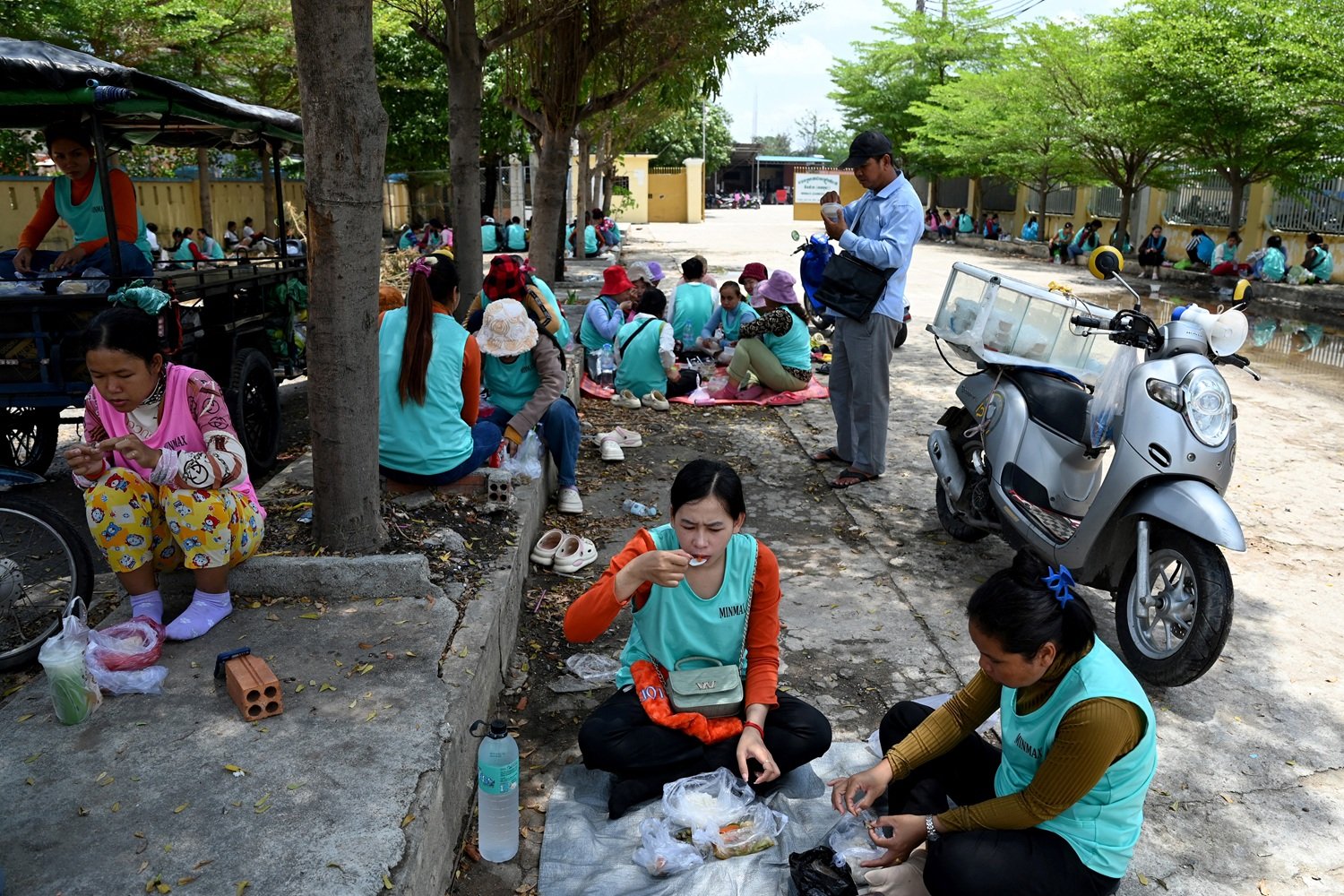Teng Yalirozy
The debate over Cambodia’s 2026 minimum wage for factory workers has begun, but expectations are painfully low. Workers are bracing for another disappointment, as unions doubt that negotiations will deliver meaningful change. At stake is not just a number—it is the dignity of nearly a million people, the majority of them women, who fuel one of the country’s most important industries yet remain trapped in poverty wages.
The current wage of $208 per month barely covers survival, let alone a decent life. In a sector dominated by women who are both breadwinners and caregivers, this amount forces impossible choices between food, housing, education, and health. These women should not be scraping by—they should be earning enough to live with security and dignity.
Since 1995, the garment industry has been the backbone of Cambodia’s growth. It expanded rapidly after the civil war, thanks to a young labor force willing to work for cheap. By 2000, exports reached $1 billion. Today, the sector is a global force: it generated $13.6 billion in exports in 2024, employs more than 918,000 people, and continues to expand. In the first half of 2025 alone, Cambodia grew its factory network to 1,682—up from 1,566 just months earlier, a staggering rise from only 64 factories in the mid-1990s.
The country now ranks as the eighth-largest apparel and footwear exporter in the world, with textiles and garments accounting for more than one-third of its GDP. In January 2024, Cambodia was even the top exporter of apparel, shoes, bags, and travel goods to foreign markets.
From $40 in the Mid-1990s to $206 in 2024
But for the workers who sustain this booming industry, prosperity has remained out of reach. Wages have crept up from $40 in the mid-1990s to $206 in 2024, with a token $2 added by order of Prime Minister Hun Manet. This puts the official minimum at just $208 for both 2024 and 2025—a pitiful figure considering the scale of profits being made.
Surviving on $200 a month has become almost impossible in today’s climate of global instability. Inflation, U.S. tariffs, skyrocketing housing prices, and even border conflict have all worsened the cost of living.
A single worker struggles to cope, let alone one supporting a family of three or more. For most, the minimum wage is supplemented with overtime, which adds only $50–$100 a month. Even with combined household earnings, average family income rarely exceeds $470.
Yet many workers also shoulder the burden of sending money back to parents and relatives in rural provinces. The result is a life lived paycheck to paycheck. They stretch every dollar, often settling for low-quality food and cramped, unsanitary housing.
Lunchtimes tell the story: thousands of women line up for cold, grimy street meals priced between 3,000 and 5,000 riel ($0.75–$1.25). For dinner, they often make the painful decision to buy discounted leftovers—wilting vegetables, bruised fruit, or stale meat—because it is the only way to save a few riels.
A 2024 survey by the Asia Floor Wage Alliance underscores the severity of the gap between wages and reality. Cambodian workers spend on average $408 a month on food and non-food essentials—double their income. Their total cost of living is estimated at $725, making Cambodia the most expensive among surveyed countries, surpassing the Philippines ($591) and Indonesia ($512).
A 2024 survey by the Asia Floor Wage Alliance underscores the severity of the gap between wages and reality. Cambodian workers spend on average $408 a month on food and non-food essentials—double their income. Their total cost of living is estimated at $725, making Cambodia the most expensive among surveyed countries, surpassing the Philippines ($591) and Indonesia ($512). Screenshort from the report.
Food insecurity is not a new problem. The last major study on garment workers’ living standards, conducted in 2008 by the Cambodian Institute for Cooperation and Peace, revealed workers cared more about the quantity of food than its quality, because quality was unaffordable. Poor nutrition has consequences: it weakens the body, stunts cognitive growth, slows learning, and leaves workers more vulnerable to illness.
This burden falls most heavily on women, who make up more than 76 percent of the sector’s workforce—around 700,000 out of 920,000 workers. As the backbones of their households, these women not only labor long hours in the factories but also carry the responsibility of caring for children and elderly relatives. When they are forced into poor-quality diets and unhealthy living conditions, entire families suffer.
Juggling The Highest Expenses With The Lowest Savings
Recent findings from the 2024 Fair Work Monitor paint an even starker picture. Nearly one-third of garment workers run out of food before the month ends. A similar share cannot afford prescription glasses, leaving them with impaired vision while still expected to meet production quotas.
More than a third cannot pay for dental care, and almost half do not have enough money for basic medication or healthcare. These gaps push workers to borrow heavily, trapping them in cycles of debt. The average loan climbed from $5,000 in 2023 to $6,000 in 2024. Many workers, especially mothers, are forced to take out new loans just to repay old ones.
Those with dependent children are hit the hardest, juggling the highest expenses with the lowest savings. This constant financial strain makes them especially vulnerable to shocks, whether from illness, accidents, or sudden job losses.
Given that one in five Cambodian households relies on income from the garment, textile, and footwear sector, the implications extend far beyond the factory floor.
This silent struggle denies workers their most basic right: the right to a decent life. While women in this sector carry the weight of Cambodia’s economic growth, they are left to endure poverty, malnutrition, and debt. If Cambodia wants sustainable development, it cannot ignore the very women who make it possible.
Raising the minimum wage is not charity—it is justice. It would uplift workers, strengthen families, improve productivity, and bolster the national economy. Garment workers, most of them women, are the backbone of Cambodia’s global success. It is time they were paid enough not just to survive, but to live with dignity.
Teng Yalirozy is a journalist at Cambodianess based in Phnom Penh. She mostly covers social issues centered on gender equality, education, environment, and arts. She also has a deep interest in international affairs and politics. She holds a Bachelor of Education in Teaching English as a Foreign Language from the Institute of Foreign Languages, Royal University of Phnom Penh. This article was first published in Cambodianess.





